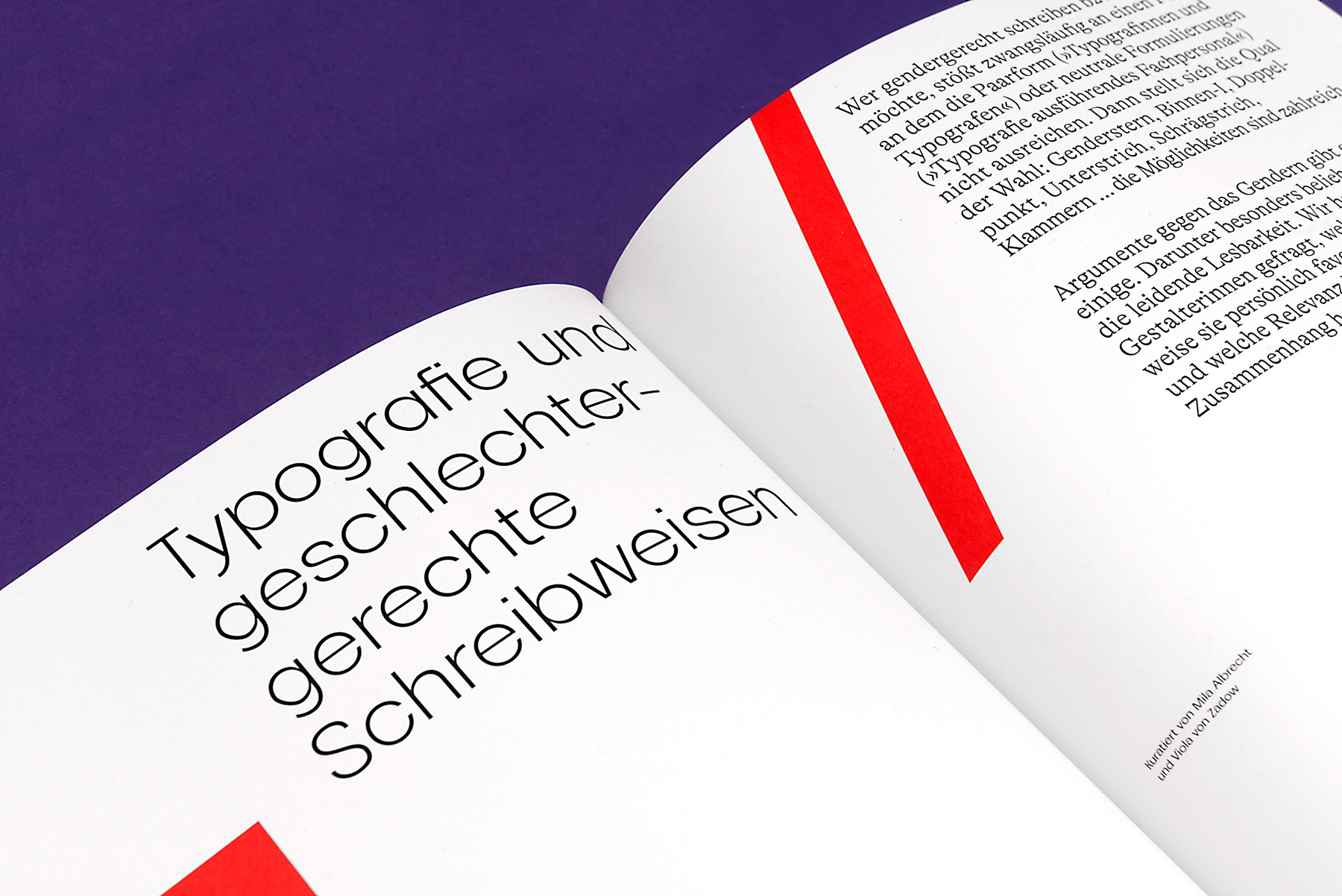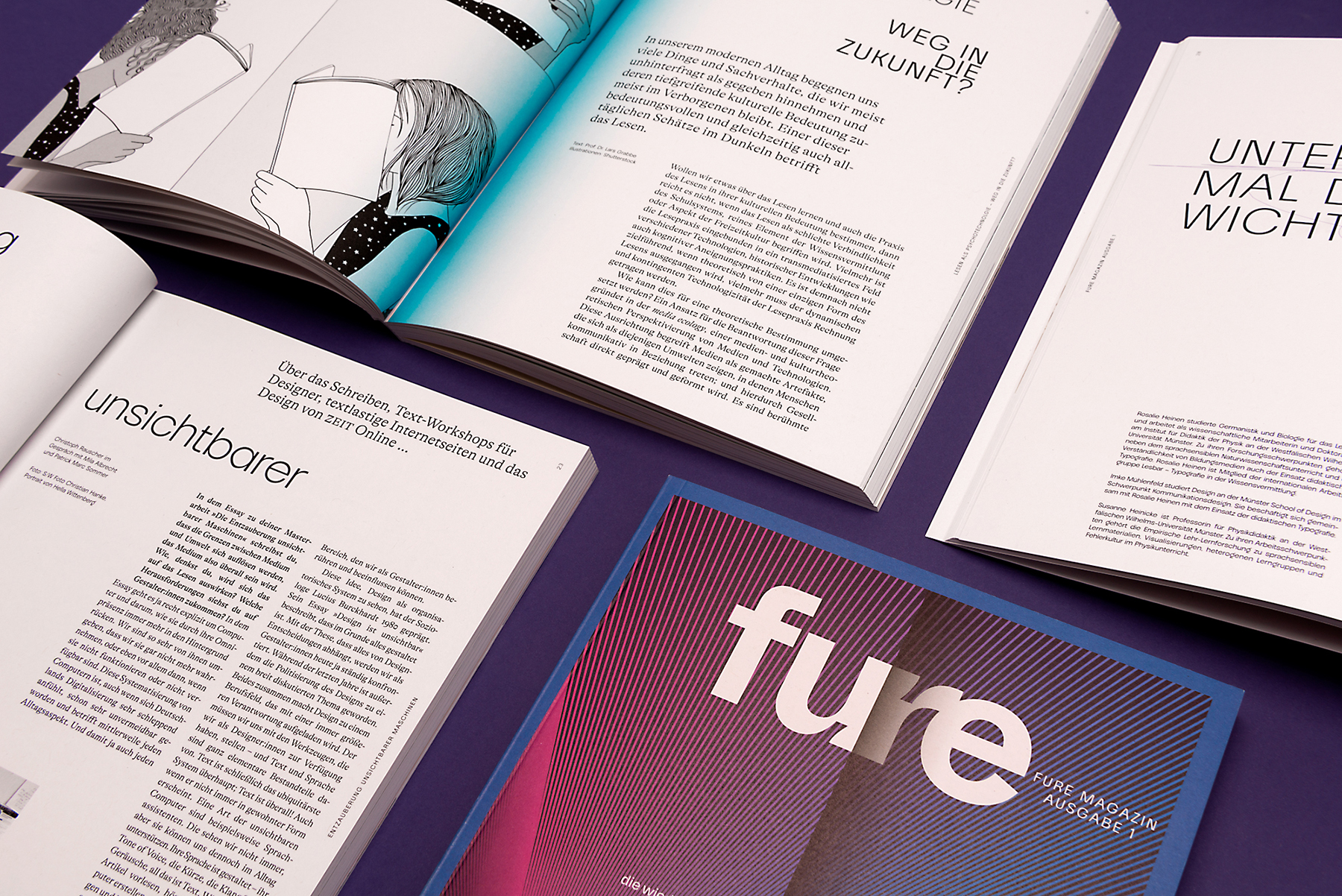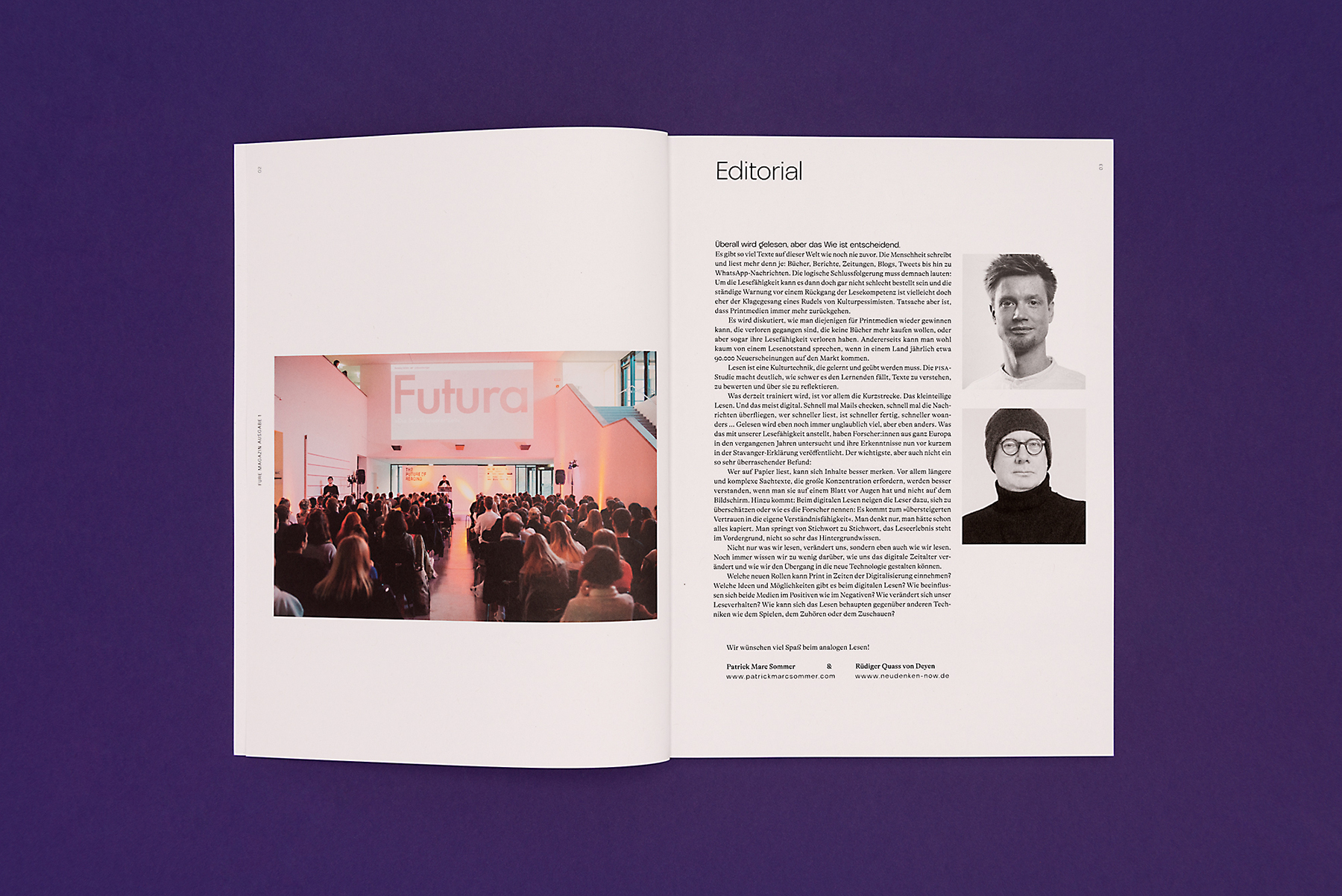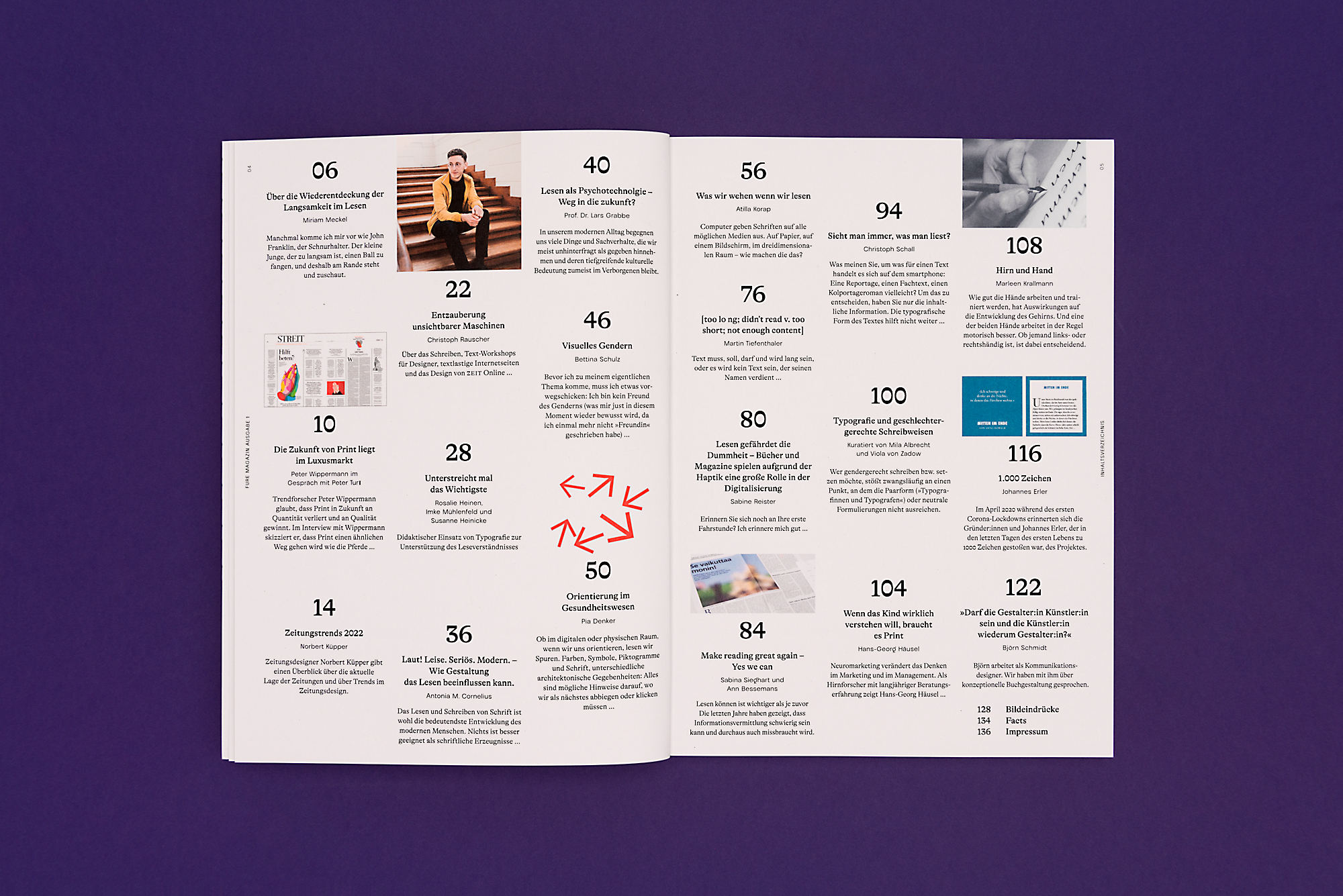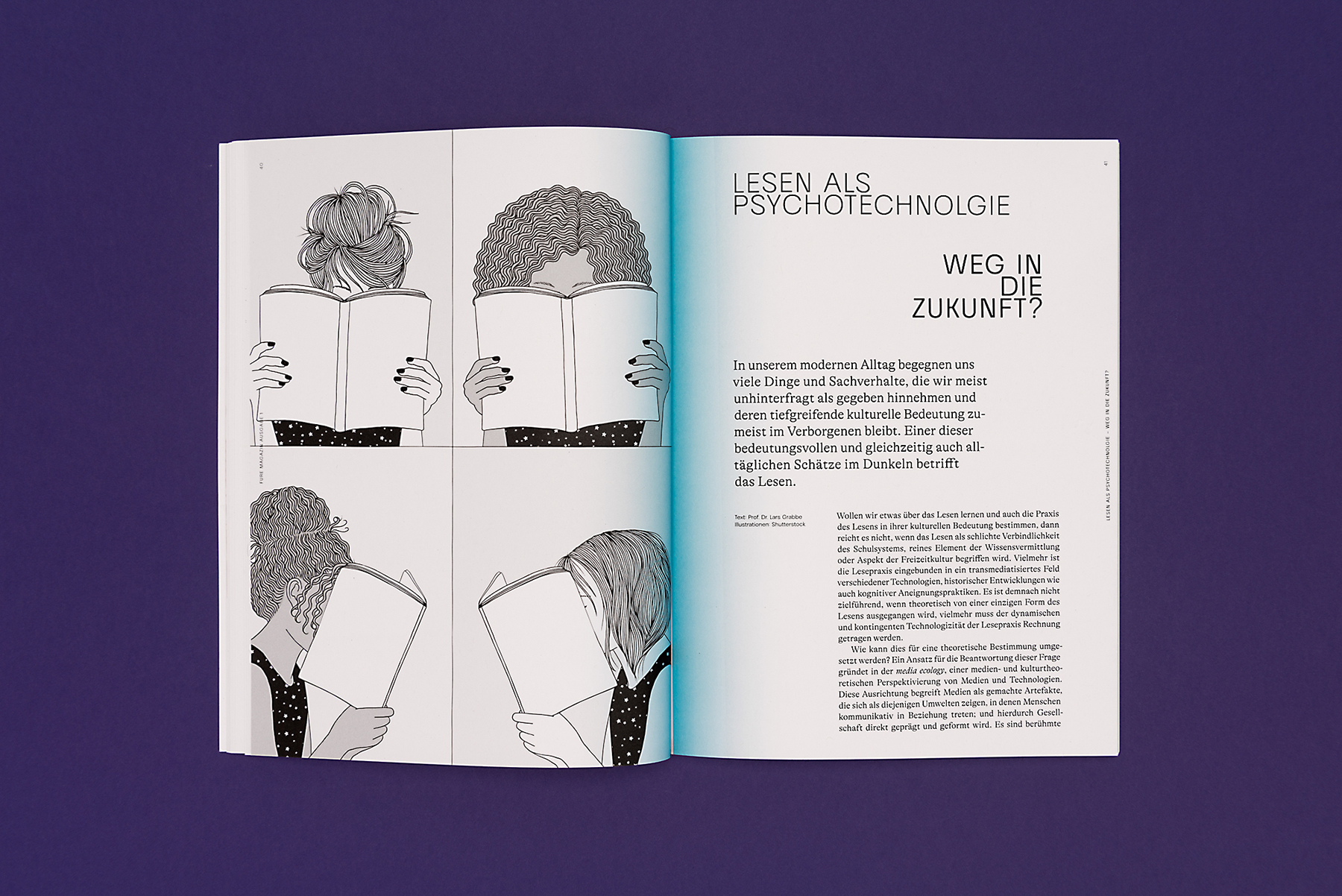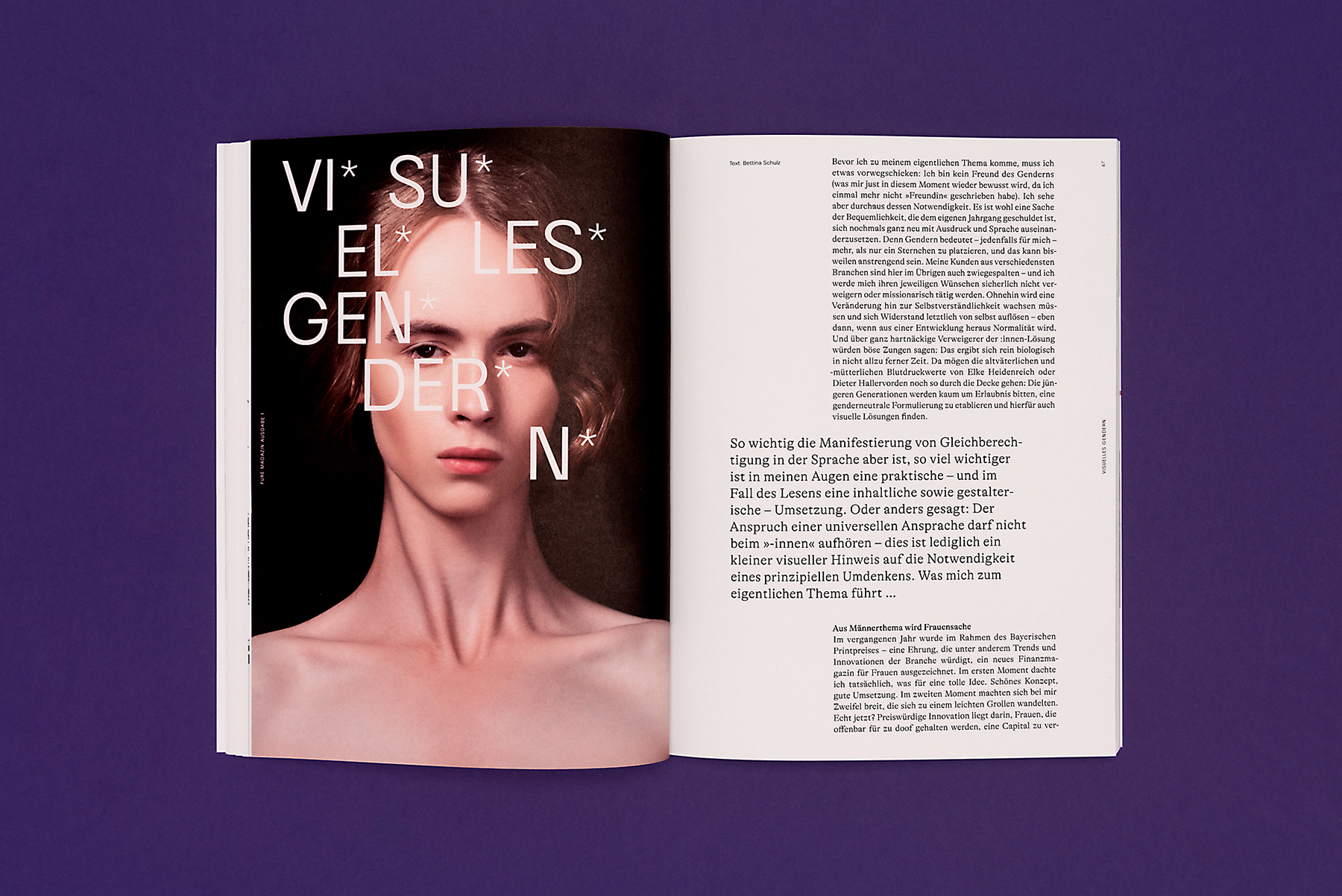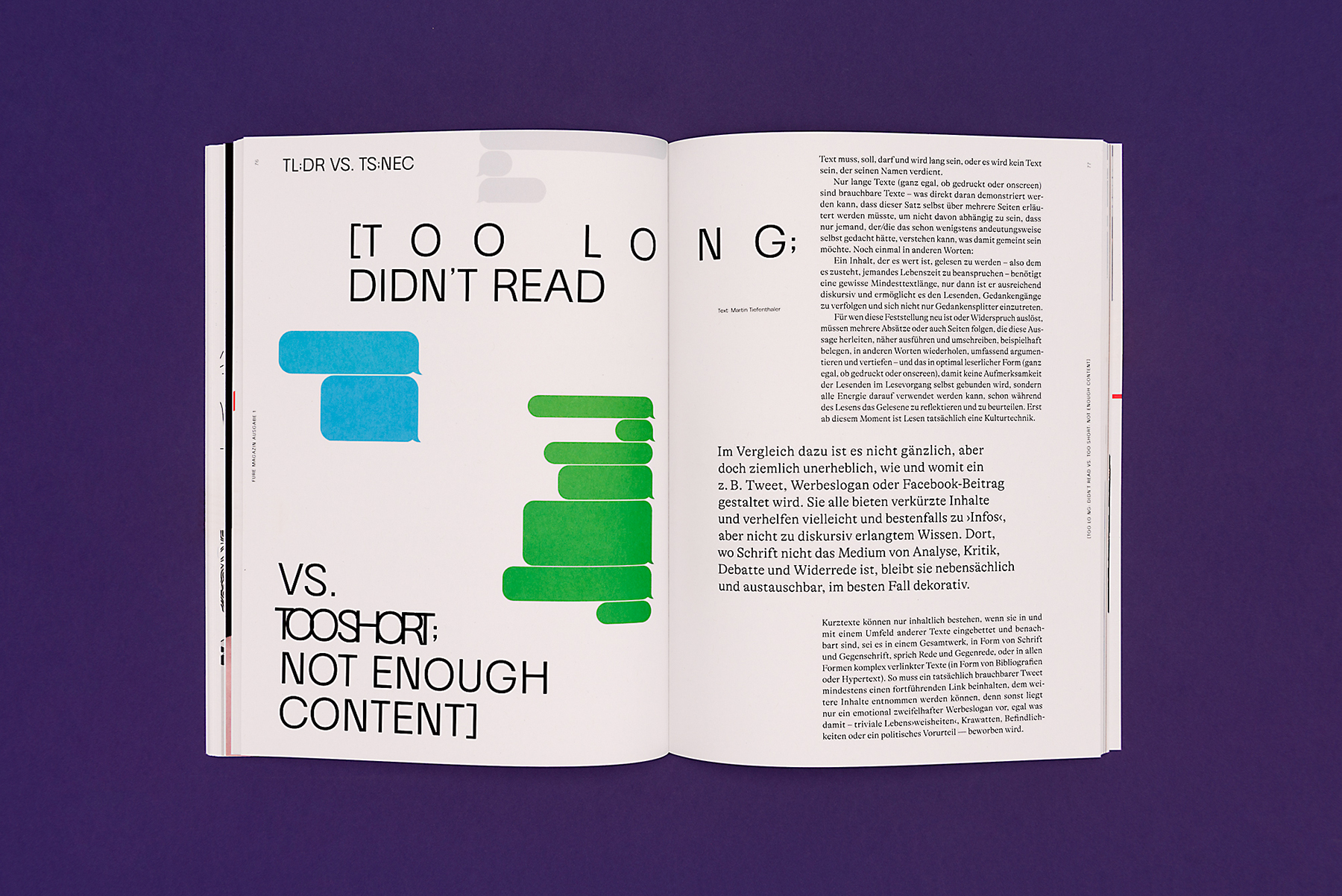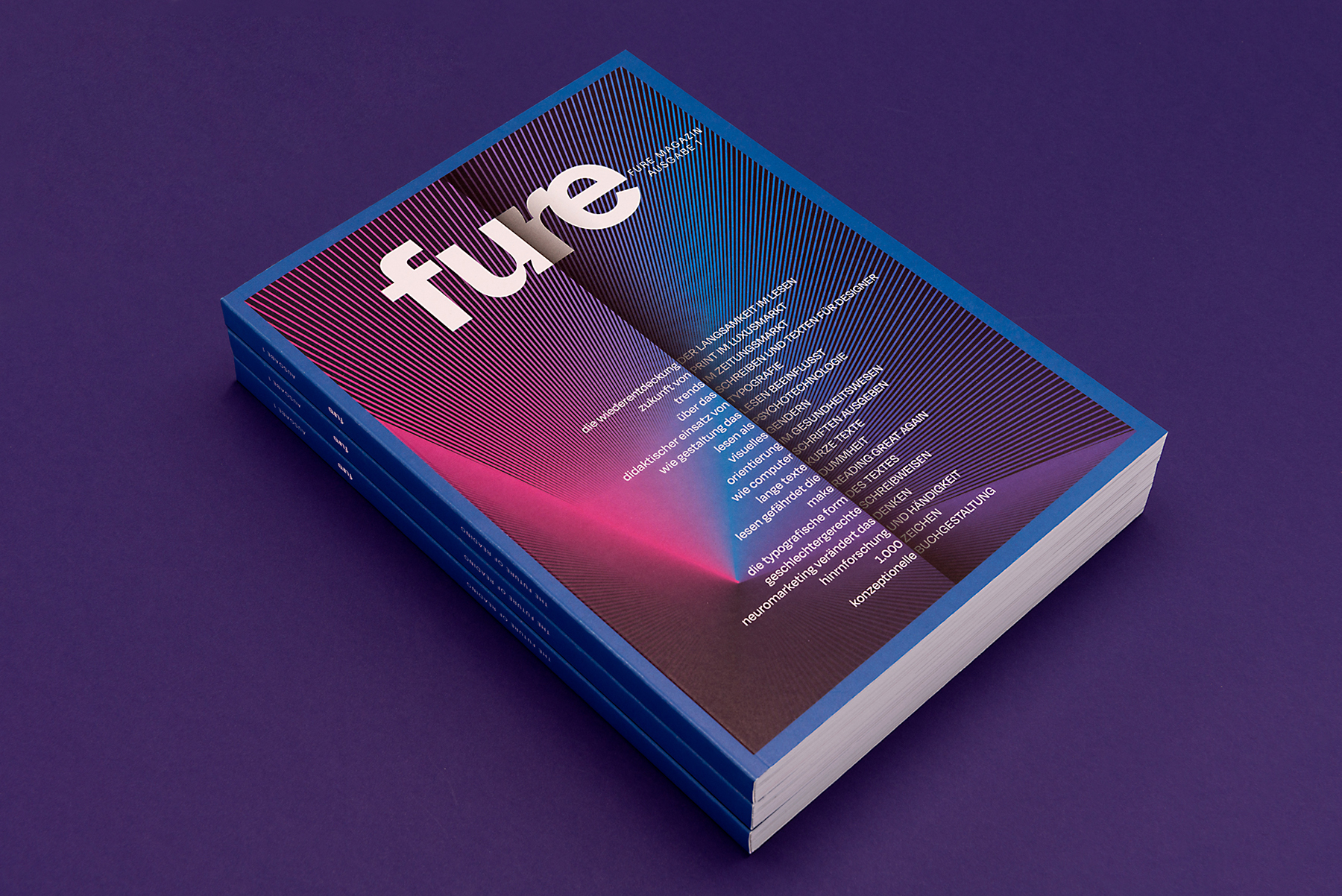FURE Magazine
The Future of Reading
People are reading, everywhere. There is more text in this world than ever before. Because humanity writes and reads more than ever before: books, reports, newspapers, blogs, tweets, and even WhatsApp messages. The logical conclusion must therefore be: Reading ability can’t be in a bad way after all, and the constant warning of a decline in reading literacy is perhaps more the lament of a pack of cultural pessimists. There is also discussion in the industry about what to do with those who have been lost, who no longer want to buy books, but in a country that puts about 90,000 new publications on the market every year, one can hardly speak of a reading emergency.
Reading is a cultural technique that needs to be practiced. What is currently being practiced, however, is: above all, short-range reading. The small-part reading. And mostly digitally. Quickly checking emails, quickly skimming the news, whoever reads faster is finished faster, faster somewhere else … People still read an incredible amount, but in a different way. Researchers from all over Europe have studied what this does to our reading ability in recent years and recently published their findings in the Stavanger Declaration. The most important, but somehow unsurprising finding: people who read on paper are better at remembering content. Especially longer and complex factual texts that require great concentration are better understood when you have them in front of your eyes on a sheet of paper rather than on a screen. In addition, when reading digitally, readers tend to overestimate themselves, or as the researchers call it: There is an ‘overconfidence in one’s own ability to understand.’ You just think you’ve got it all figured out.
Not only what we read changes us. But also how. We still know too little about how we can sensibly shape the transition to the new technology.
What new roles can print take on in times of digitalization? What ideas and possibilities are there for digital reading? How does this change our reading behavior? How can reading assert itself against other cultural techniques such as playing, listening, or watching? The FURE creates space for statements, visions and positions not only from designers … but also for designers.
FURE Magazine
Editors: Rüdiger Quass von Deyen, Patrick Marc Sommer
Concept, Design & Layout: Fenna J. Flucke, Patrick Marc Sommer
Cover Design: Rüdiger Quass von Deyen
Price: € 19,80
BUY
Picture ©: Marie Rime

